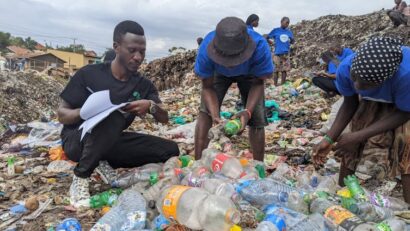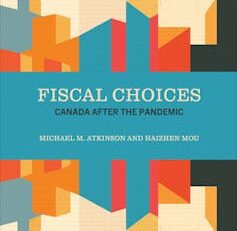
Kakapåkaka kaka
En ny klassiker kan man kalla det. Jag tog två kakor och slog ihop till en. I botten är det mördeg och ovanpå en havrekaka. Det blev en av mina favoritkakor. Lätta att göra är de också. Recept Ugnstemperatur 175 Läs mer…
Nyheter och länkar - en bra startsida helt enkelt |Oculus lyx vitae

En ny klassiker kan man kalla det. Jag tog två kakor och slog ihop till en. I botten är det mördeg och ovanpå en havrekaka. Det blev en av mina favoritkakor. Lätta att göra är de också. Recept Ugnstemperatur 175 Läs mer…

Vaping is now more common than cigarette smoking among young people, according to a new report coordinated by the University of Glasgow and commissioned by the World Health Organization.
This echoes research that has found the popularity of vaping among young people in the UK has surged in recent years. The number of children experimenting with vapes increased from 7.7% in 2022 to 11.6% in 2023, according to a survey conducted by anti-smoking charity, Ash.
Most of these children wanted to try vaping “out of curiosity” and were aware of the promotion of vapes in shops and online. Other motivations for using vapes included the ease of obtaining them, the flavours (young people are particularly attracted to fruity or dessert flavours) and help connecting with peers.
But vaping comes with many risks to young people, including harm to the lungs and brain.
Adolescence is a delicate period for the development of the brain. During this time, the brain grows, changes and forms new connections. The parts that control emotions and reward develop faster than those that help with planning and self-control. This can lead to teens taking more risks, such as vaping.
Nicotine, which is contained within vapes, affects teens differently to adults, as their brains are more sensitive to it. Brain receptors affected by nicotine are important for learning and addiction. Even low levels of nicotine exposure can make teens more likely to get addicted to other substances, experiment with risky behaviour, or develop mental health problems.
Nicotine can have long-lasting effects on the adolescent brain. Nicotine exposure can harm a young person’s ability to learn and focus, and make them more likely to act impulsively when they reach adulthood.
Even a small amount of nicotine can be risky for teens who are predisposed to conditions such as asthma, making them more sensitive to stress and possibly leading to mood problems later in life.
Young people who vape may be more likely to start smoking and find it harder to quit any nicotine use at all. And using vaping products alongside other products containing nicotine, like cigarettes, for example, may be even worse for their health.
Hidden risks
There are many less obvious risks to vaping too. The chemicals in vape liquids – including various toxins, heavy metals and possibly even radioactive polonium – may be harmful. The ingredients, how much of each is used and the temperature to which they’re heated can also affect what ends up in the vapour.
Some vapes may also deliver more nicotine than the user expects. This could be because of the specific mix of ingredients different brands put in the vape liquid.
The variety of flavourings in vapes is concerning, especially for teens. With over 7,000 flavours on the market such as fruit, candy floss, mint and chocolate, vapes are designed to be appealing to young people. A 2023 US study found teens are especially drawn to the more fruity flavours.
But these flavourings might also damage the lungs, potentially causing a serious condition called “popcorn lung” or bronchiolitis obliterans. This is a condition that affects the smallest airways of the lungs and can lead to coughing and shortness of breath.
There are more than 7,000 flavours of vapes available on the market.
Michael Kemp/Alamy
There’s also some evidence that these flavourings, which are often highly concentrated in the vape aerosol, can harm cells in the body.
The Flavor and Extract Manufacturers Association is the national body representing the flavour industry in the US. It has raised concerns about how well vape flavourings are tested for safety, particularly for inhalation purposes.
This is important because some flavourings, like diacetyl, which can be used to give a butter-like flavour to food, seem harmless when you eat them but can cause serious lung problems if inhaled. This is a chemical linked with popcorn lung, which has been seen in workers exposed to high levels of diacetyl in food factories. As a result, major popcorn manufacturers have removed diacetyl from their products. But it is still available in vapes.
The process of extracting nicotine from tobacco can leave behind other chemicals like nornicotine and residues such as cotinine. And improper handling or storage of these substances can create impurities that are harmful to health.
Even if a vape liquid is advertised as being nicotine-free, it might still contain chemicals called nitrosamines, which are known to cause cancer.
Is a ban on disposable vapes enough?
The forthcoming ban on disposable vapes in England, Scotland and Wales may not be enough to deal with the problem. With more than 400 vape brands already on the market, a more comprehensive approach is needed.
This should include a crackdown on adults buying vapes for young people and prominent health warnings displayed both online and in stores that are as clear as those on cigarette packs.
Read more:
To stop teenagers vaping they need to see it as cringe, not cool
We also need restrictions on flavours that target young people, stricter age verification for all vape sales and regulations that cover not just the nicotine content but also the ingredients and packaging of nicotine-free vapes.
The continued monitoring of the safety of these products is also vital, particularly in light of the loopholes exploited by “rogue firms” providing children with complimentary samples of nicotine-free vapes.
Anyone considering vaping as a way to quit smoking should aim to eventually stop vaping altogether, not just switch one habit for another. Vaping isn’t risk free for non-smokers and can have harmful health effects, especially on young people. Läs mer…

How do we understand past societies? For centuries, our main sources of information have been pottery sherds, burial sites and ancient texts.
But the study of ancient DNA is changing what we know about the human past, and what we can know. In a new study, we analysed the genetics of hundreds of people who lived in the Carpathian Basin in southeastern central Europe more than 1,000 years ago, revealing detailed family trees, pictures of a complex society, and stories of change over centuries.
Who were the Avars?
The Avars were a nomadic people originating from eastern central Asia. From the 6th to the 9th century CE, they wielded power over much of eastern central Europe.
A gold earring from a 7th-century female grave at the Rákóczifalva site, Hungary.
Hungarian National Museum, CC BY
The Avars are renowned among archaeologists for their distinctive belt garnitures, but their broader legacy has been overshadowed by predecessors such as the Huns. Nevertheless, Avar burial sites provide invaluable insights into their customs and way of life. To date, archaeologists have excavated more than 100,000 Avar graves.
Now, through the lens of “archaeogenetics”, we can delve even deeper into the intricate web of relationships among individuals who lived more than a millennium ago.
Kinship patterns, social practices and population dynamics
Much of what we know about Avar society comes from descriptions written by their enemies, such as the Byzantines and the Franks, so this work represents a significant leap forward in our understanding.
We combined ancient DNA data with archaeological, anthropological and historical context. As a result, we have been able to reconstruct extensive pedigrees, shedding light on kinship patterns, social practices and population dynamics of this enigmatic period.
Excavations at the cemetery of Rákóczifalva, Hungary in 2006.
Hungarian National Museum, CC BY
We sampled all available human remains from four fully excavated Avar-era cemeteries, including those at Rákóczifalva and Hajdúnánás in what is now Hungary. This resulted in a meticulous analysis of 424 individuals.
Around 300 of these individuals had close relatives buried in the same cemetery. This allowed us to reconstruct multiple extensive pedigrees spanning up to nine generations and 250 years.
Communities were organised around main fathers’ lines
Our research uncovered a sophisticated social framework. Our results suggest Avar society ran on a strict system of descent through the father’s line (patrilineal descent).
Following marriage, men typically remained within their paternal community, preserving the lineage continuity. In contrast, women played a crucial role in fostering social ties by marrying outside their family’s community. This practice, called female exogamy, underscores the pivotal contribution of women in maintaining social cohesion.
Additionally, our study identified instances where closely related male individuals, such as siblings or a father and son, had offspring with the same female partner. Such couplings are called “levirate unions”.
Read more:
In a Stone Age cemetery, DNA reveals a treasured ’founding father’ and a legacy of prosperity for his sons
Despite these practices, we found no evidence of pairings between genetically related people. This suggests Avar societies meticulously preserved an ancestral memory.
These findings align with historical and anthropological evidence from societies of the Eurasian steppe.
Our study also revealed a transition in the main line of descent within Rákóczifalva, when one pedigree took over from another. This occurred together with archaeological and dietary shifts likely linked to political changes in the region.
The transition, though significant, cannot be detected from higher-level genetic studies. Our results show an apparent genetic continuity can mask the replacement of entire communities. This insight may have far-reaching implications for future archaeological and genetic research.
Future direction of research
Our study, carried out with researchers from the Max Planck Institute for Evolutionary Anthropology in Leipzig, Germany and at Eötvös Loránd University in Budapest, Hungary, is part of a larger project called HistoGenes funded by the European Research Council.
This project shows we can use ancient DNA to examine entire communities, rather than just individuals. We think there is a lot more we can learn.
An expert at work harvesting ancient DNA from a human bone.
Max Planck Institute for Evolutionary Anthropology
Now we aim to deepen our understanding of ancestral Avar society by expanding our research over a wider geographical area within the Avar realm. This broader scope will allow us to investigate the origins of the women who married into the communities we have studied. We hope it will also illuminate the connections between communities in greater detail.
Additionally, we plan to study evidence of pathogens and disease among the individuals in this research, to understand more about their health and lives.
Read more:
Ancient DNA reveals children with Down syndrome in past societies. What can their burials tell us about their lives?
Another avenue of research is improving the dating of Avar sites. We are currently analysing multiple radiocarbon dates from individual burials to reveal a more precise timeline of Avar society. This detailed chronology will help us pinpoint significant cultural changes and interactions with neighbouring societies.
The authors would like to acknowledge the contributions to this work of Zsófia Rácz, Tivadar Vida, Johannes Krause and Zuzana Hofmanová. Läs mer…

In the two decades to 2019, global plastic production doubled. By 2040, plastic manufacturing and processing could consume as much as 20% of global oil production and use up 15% of the annual carbon emissions budget.
Most of the plastic we make ends up as waste. As plastic manufacturers increase production, more and more of it will end up in our landfills, rivers and oceans. Plastic waste is set to triple by 2060.
Producers often put the onus back on consumers by pointing to recycling schemes as a solution to plastic pollution. If we recycle our plastics, it shouldn’t matter how much we produce – right?
Not quite. The key question here is how close the is relationship between plastic production and pollution. Our new research found the relationship is direct – a 1% increase in plastic production leads to a 1% increase in plastic pollution, meaning unmanaged waste such as bottles in rivers and floating plastic in the oceans.
Not only that, but over half of branded plastic pollution is linked to just 56 companies worldwide. The Coca-Cola Company accounts for 11% of branded waste and PepsiCo 5%. If these companies introduce effective plastic reduction plans, we could see a measurable reduction in plastic in the environment.
The problem is only going to get more urgent. By the end of the current decade, experts estimate another 53 million tons will end up in the oceans every single year. That’s bad for us, and for other species. Plastics can cause real damage to our health. Our first exposure to them starts in the womb. In the seas, plastics can choke turtles and seabirds. On land, they can poison groundwater. Socially and economically, plastic pollution now costs us about A$3.8 trillion a year.
This week, negotiators are gathered in Canada to continue developing a legally binding global plastics treaty.
Plastic fantastic?
In the 1960s and 70s, plastics were seen as a modern wonder. Soon, they became common – and then ubiquitous. Single-use plastics appeared everywhere. After being tossed onto roadsides or in rivers, these plastics can make their way to the ocean.
Today, about 36% of all the world’s plastic pollution comes from the packaging sector in the form of single-use plastics.
To find out how plastic production influences waste, we turned to global data from litter audits, surveys of waste in the environment. Data from these audits is useful to understand changes in types and volumes of plastic waste. We used five years of audit data from more than 1,500 audits across 84 countries. The audits showed 48% of the litter had a brand name, and 52% was unbranded.
Volunteers from Green Africa Youth Organization and End Plastic Pollution Uganda examine branded plastic waste and record brand audit data in Kampala, Uganda, in 2022.
Nirere Sadrach, End Plastic Pollution Uganda, Author provided (no reuse)
To assess production levels, we used data reported to a circular economy organisation by major plastics companies and compared it against levels of branded plastic pollution.
We expected more production would mean more waste, but not such a direct correlation. The fact it’s a 1:1 ratio is eye-opening. What this means is as plastic-packaging producing companies scale up their operations, they directly contribute more waste to the environment.
We found just 13 companies individually contributed 1% or more of the total branded plastic observed. All of these companies produce food, beverage, or tobacco products, usually packaged in single-use plastic.
The Coca-Cola Company products were the top source of branded plastic pollution, representing 11% of all branded litter.
Right now, companies get to sell their products in single-use plastics and the onus is on consumers to recycle or bin the plastic. This in turn creates high costs for local governments, who run the waste services. There’s also the cost of a degraded environment we all bear.
Volunteers for Greenpeace Indonesia take part in a brand audit in 2024 in Jakarta, Indonesia.
Ezra Acayan, Break Free From Plastic, Author provided (no reuse)
Many major companies have made voluntary commitments to reduce plastic. However, many of these companies are missing their targets, suggesting these voluntary measures are proving ineffective.
There’s a better alternative. Producer responsibility schemes could help to shift the costs and responsibility away from consumers and back to the producers. This is in line with the “polluter pays” principle – companies making products that become waste have the responsibility to ensure it’s appropriately managed.
Where these schemes are up and running, such as in the European Union, companies often respond by changing how they package products. If it costs them money, they will act.
The problem of single-use plastics
Even when collected, single-use plastics are a difficult waste stream to manage as they have little or no recycling value. Sometimes these plastics are burned as fuel for cement kilns or used in waste-to-energy facilities.
Recycling can be a surprisingly large source of microplastics, as mechanical recycling methods chew up bottles into tiny bits.
Then there’s the fact recycling is not a circle, as the famous logo might suggest. The more we recycle plastic, the more degraded it becomes. Eventually, this plastic becomes waste.
Read more:
Plastic pollution: campaigners around the world are using the courts to clean up – but manufacturers are fighting back
To stop plastic waste, stop making more plastic
If recycling and landfilling can only go so far, the missing piece of the puzzle has to be capping plastic production.
What would that look like?
It would involve requiring manufacturers to steadily reduce the amount of plastic used in their products over time and adopt safe, sustainable plastic alternatives as they become available.
Countries could:
set measurable targets to phase out non-essential, hazardous and unsustainable single-use products, such as take-away containers, plastic cutlery and single-use plastic bags
work to design safe and sustainable products to cut global demand for new plastic while increasing reuse, refilling, repairing, and recycling
invest in non-plastic alternatives and substitutes with better social, economic and environmental profiles, such as old-fashioned reusables.
What about the 52% of unbranded plastic waste? To tackle this requires better data and accountability, such as through an international open-access database of plastic producers or through international standards for package branding. Australia is moving towards this with its planned reforms for packaging.
One thing is certain – current trends mean ever more plastic, and more plastic means more plastic pollution.
Read more:
The climate impact of plastic pollution is negligible – the production of new plastics is the real problem Läs mer…

At a time of rising food costs and growing food insecurity, a large percentage of food grown for consumption never reaches our tables.
Indeed, some estimates suggest that approximately 40 per cent of fruits and vegetables never even leave farms. Much of it gets rejected by wholesalers and retailers based on irregularities in weight, size or shape.
This desire for cosmetically appealing food also extends to consumers, as we often prefer picture-perfect produce. Unsurprisingly, this wanton waste takes a significant environmental toll, with an estimated eight to 10 per cent of global greenhouse gas emissions tied to unconsumed food.
Showing ugly produce some love
Some companies have taken strides to counter food waste. A prominent example in the United States is Misfits Market, which launched in 2018.
By buying misshapen and ugly produce and reselling it at discount prices in subscription boxes, Misfits Market has grown into a billion-dollar business.
Closer to home, Loblaw Companies’ “naturally imperfect” line offers visually unappealing produce at lower prices, while newcomers such as Montréal-based Food Hero are developing apps to reduce a different but persistent form of waste by helping customers find deals on food approaching its best-by date.
A customer shops for produce at a grocery store In Toronto in February 2024.
THE CANADIAN PRESS/Cole Burston
Despite such encouraging efforts, there’s still a lot of work to do on changing attitudes and behaviours to alleviate waste. This has become an important academic issue, and is increasingly being tackled by those of us in marketing, a field that has perpetuated this cycle of waste.
In a recent study, we introduced our RESCUER framework designed to expose students to food waste and to generate behavioural changes. We developed it over three years through research assignments undertaken by students in our classes at Carleton University. We used 90 reflective essay assignments alongside 63 sets of surveys (administered pre- and post-assignment) to develop the framework.
Steps towards change
RESCUER stands for the steps in the process of learning, action and change undertaken by students, and combines passive and active modes of learning.
We first engaged students with resources — “passive” forms of learning through lectures and curated readings on food waste, irregularly shaped produce and sustainable practices.
Next, students engaged in an experiential learning exercise that had them actively planning, shopping for and preparing a salad with food waste issues in mind, before writing reflective journals about their experiences. Journaling allows students to articulate their feelings, thoughts and values, leads them to examine and challenge pre-conceived assumptions, practices and policies, and encourages them to be more alert when shopping for and preparing food.
We next accounted for the social influences of family, friends and peers on sustainability-minded behaviours.
Throughout the process, students developed a greater cognizance of food waste, and these issues became more readily and consistently resonant when shopping. The process also resulted in underlying problem-salience — the spontaneous evocation of the food waste problem in consumers’ minds as soon as they need to buy or prepare food.
Finally, we identified factors that expedite learning and adoption processes, such as the availability of recycling and composting facilities at home and access to retailers that support sustainable practices and provide price discounts.
A worker stocks shelves of produce at a Metro grocery store.
THE CANADIAN PRESS/Cole Burston
Student comments
The results? Well, students emerged with a much deeper understanding of food waste and an increase in responsible attitudes and behaviours. This increase in responsibility is evident in the comments from students about RESCUER, including:
“I am cognizant of the negative effects that food abnormalities have on the environment due to food waste issues. On that account, I will surely change some of my habits to match my perceived identity. Seeing myself as, and wanting to be more of, a pro-environmental person, I want my actions regarding food waste to match this desired self-identity.”
The students’ newfound awareness also translated into more responsible consumption behaviours. They started choosing imperfect produce, as one student reported:
“I bought abnormal carrots and green onions and even considered some oddly shaped bell peppers in my purchase decisions.”
They also became less picky about expiration dates, according to another student who was conscious of preventing waste:
“Completing this assignment has increased my awareness to ensure to take the foods on the shelves that are approaching their best-before date as opposed to selecting the freshest option each time.”
Another responsible action is in how students spread what they have learned, as one noted:
“I am certainly going to share what I have learned from the readings with friends and family.”
These qualitative findings are further validated by our survey results. A comparative analysis was conducted before and after the framework’s implementation. It revealed that students’ awareness, understanding and actions related to sustainability were all improved after having completed the exercise.
Educators can change attitudes
Overall, we’ve seen our RESCUER framework cultivate a shift towards responsible consumption, and it also situates marketing education within a sustainability narrative.
Ours is an example of how educators can play a crucial role in changing attitudes and actions, and in equipping future professionals with tools to tackle the challenges of sustainability.
Conversations about what sustainability entails, how it can be encouraged and its integration into education is more relevant than ever as we strive for ways to work towards a more sustainable future. Läs mer…

Men are still often afforded a great deal of power and privilege in society due to their gender, however, they also experience disproportionate rates of negative psychosocial outcomes. Men, for instance, have higher mortality rates, lower life expectancy, and are more likely to die by suicide.
Yet, despite those challenges, men are less likely than women to seek professional help. Constrictive social norms and views of masculinity prevent many men from being vulnerable, limiting access to emotionally intimate relationships and creating a vicious circle where loneliness further undermines their well-being.
While there has been progress to reduce stigmatization when it comes to seeking help with mental health, the intersectionality of mental health is complex. In other words, how individuals deal with their mental health can vary from person-to-person, gender-to-gender, and culture-to-culture.
In our own studies evaluating mindfulness training in workplace settings, we noticed we were attracting disproportionate samples of women. Even more dismaying is research that finds when men engage with mindfulness training, they don’t seem to benefit as much as their female counterparts. So, how can we help men navigate social norms and perhaps change their attitudes around what it means to be a man in order to support their mental health?
Groups enabled men to reconstruct their views of masculinity by showing or observing behaviour that departed from traditional norms.
(Shutterstock)
Men’s groups
Over time, normative gender roles have perpetuated a tendency for men to suffer in silence leaving them unable to disclose and treat, or perhaps even notice, their distress. Even when men are conscious of the psychological dysfunctionality of traditional masculinity, straying from these roles is difficult due to fear of social condemnation.
Finding ways to let go of restrictive gender roles and develop new attitudes towards masculinity might enable men to redefine what it means to “man up” in the modern era and move towards greater health.
Men’s groups, where men can be genuinely transparent and gather to discuss the challenges they face, provide a social learning context to be authentic and develop their emotional processing skills in a safe container free from the risk of ostracization.
In our research, we found that men’s group’s can help them develop new attitudes towards masculinity and more adaptive ways to process life’s challenges.
To understand how these kinds of groups can change attitudes, we partnered with Owen Marcus, who has created programming designed to help men develop their emotional awareness, and EVRYMAN, a contemporary men’s group based in the United States.
We recruited 14 men who had enrolled in EVRYMAN’s Fundamentals Program, a four-week online experience led by a trained facilitator. Through two sets of interviews, we spoke to them about their experiences, heard their reflections on their experiences in the group and their perceived benefits.
Men’s groups, where men can be vulnerable and gather to discuss the challenges they face, provide a social learning context to be authentic.
(Shutterstock)
Reshaping attitudes
The men were able to reshape their attitudes towards masculinity through three main stages. First, they began to identify their discontent with how social norms prevented them from being able to express weakness and the notable toll this took. Many participants, for instance, recounted how experiences with their fathers or with other men led them to keep their hardships to themselves.
These groups then enabled men to reconstruct their views of masculinity by showing or observing behaviour that departed from traditional norms and receiving or witnessing these men be celebrated for their courage to be vulnerable. Rather than being punished for disclosing inner turmoil, these men were able to experience belonging.
Finally, in an enacting phase, men could transfer the behaviour they were embodying in the safety of the men’s group to their everyday lives. Men described feeling more confident, authentic and attuned to their own emotions and needs. They noticed decreases in emotional suppression and reactivity and enhancements to the quality of their relationships with others.
Read more:
Building healthy relationship skills supports men’s mental health
For men looking for ways to bolster their mental health, our research offers several practical recommendations.
Men learn from other men ahead of them. Find a coach or consider joining a men’s group to learn new ways of relating and witnessing first-hand what happens when your fears of rejection do not come to fruition.
In the absence of a role model, educate yourself on new approaches and behaviours to support the full spectrum of being human. For example, see the guidelines recently produced by The American Psychology Association to help enhance gender and culture-sensitive psychological practice with boys and men from diverse backgrounds in the United States.
Lastly, normalize sharing emotions. The next time someone courageously discloses that they’re struggling, instead of changing the subject, ask them to tell you more. Läs mer…

Russia’s invasion of Ukraine has put the country’s nuclear facilities at considerable risk. For example, on April 7 a drone attacked Ukraine’s Zaporizhzhya Nuclear Power Plant. This attack on the largest nuclear power plant in Europe was a rare instance of a direct assault on a nuclear facility. While both Ukraine and Russia deny responsibility for the drone attack, it’s clear that Russia’s ongoing invasion has put the site at active risk.
Indeed, the director general of the International Atomic Energy Agency (IAEA), Rafael Mariano Grossi, has called the attack “a major escalation of the nuclear safety and security dangers in Ukraine.”
Unfortunately, the Zaporizhzhya plant is not the only site in Ukraine where nuclear and radioactive safety is compromised by the ongoing war.
Radioactive pollution from nuclear reactors
Ukraine is a country with hundreds of industrial facilities across various sectors. Many of these facilities are now either under Russian occupation or close to active war zones.
Ukraine has four operating nuclear power plants including the Rivne, Khmelnytskyi, Zaporizhizhiya and South Ukraine plants.
The Zaporizhzhya site has six nuclear reactors, all six of which are currently in cold shutdown. However, Russian president Vladimir Putin has expressed an interest in restarting the Zaporizhzhya plant — a plan which should cause significant concern.
Read more:
Ukraine is losing the war and the west faces a stark choice: help now or face a resurgent and aggressive Russia
Ukraine also operates a smaller research reactor at the National Science Centre at the Kharkiv Institute of Physics and Technology. Since February 2022, the reactor has been in long-term shutdown (or a ‘subcritical state’).
Although the institute has sustained significant damage due to Russia’s ongoing bombardment and shelling of Kharkiv, radiation so far has not been released from the reactor. Yet, the situation remains precarious.
In recent weeks Kharkiv has been targeted by Russian bombing with a particular focus on the city’s energy infrastructure. On April 4 the nuclear research facility lost power as a result of Russian attacks necessitating the use of temporary generators to maintain the reactors subcritical state.
Mykola Shulga, general director of the National Scientific Centre in Kharkiv, Ukraine shows the damage sustained to the facility’s nuclear laboratory building after a Russian attack in May 2023.
(AP Photo/Oleksandr Brynza)
All nuclear reactors in Ukraine are at risk, however, the closer the site is to the front lines the greater the risk grows. That being said, it is not just the direct physical danger of attack which presents a risk to these facilities.
Nuclear power plants require constant maintenance, monitoring and control to ensure safe operation. A recent report by the Conflict and Environmental Observatory and Zoï Environment Network laid bare the risks of inadequate power, water and human oversight to the safety of these plants.
The destruction of the Kakhovka Dam in June 2023 raised serious concerns about the safe operation of the Zaporizhzhya plant. Earlier, the capture of the abandoned Chernobyl nuclear power plant by Russian forces in February 2022 set a dark precedent for the military occupation of a civilian nuclear power plant. The Chernobyl site also reminds us that nuclear radiation can contaminate an area far beyond the site itself.
Pollution from other sites
Aside from nuclear reactors, Ukraine hosts other sites that pose a radiation risk if sabotaged or mishandled.
Such sites include radioactive waste storage facilities, uranium mines and the site of the peaceful nuclear explosion at the Yunkom mine. While all these sites pose a potential radiation risk, the latter may already be spilling radioactive pollution.
In 1979, Soviet authorities carried out the controlled explosion of a 0.3 kiloton nuclear bomb 903 metres down inside the Yunkom mine. In 2018, Russian forces intentionally flooded the Yunkom mine, resulting in the (already potentially cracked) chamber containing the nuclear material to be submerged. There is a real risk that this water may allow radioactive pollution to spread across a wide area.
A report on the attack of the Zaporizhzhya Nuclear Power Plant by Russian forces, produced by MSNBC.
The risks are real
As long as there is war in Ukraine, the threats to nuclear and radiation safety are real. Regardless of whether there are direct attacks on sites with radioactive material or if disruptions inhibit their safe operation, the consequences of the radioactive contamination will be significant and long-lasting.
These threats should invigorate discussions around international nuclear safety norms and how they can be upheld during armed conflicts. Läs mer…

In recent years, the global trade in elephant ivory has faced significant restrictions in an effort to protect dwindling elephant populations. Many countries have stringent controls on the trade of elephant ivory. The sale of mammoth ivory, sourced primarily from long-extinct species, however, remains unregulated.
But it’s a significant challenge for customs and law enforcement agencies to distinguish between ivory from extinct mammoths and living elephants. This is a process that is both time-consuming and requires destroying the ivory.
Now our new study, published in PLOS ONE, presents a major breakthrough – using a well known laser technique to tell mammoth and elephant ivory apart.
Our results couldn’t come soon enough. The number of African elephants has dramatically declined from approximately 12 million a century ago to about 400,000 today.
Annually, over 20,000 elephants are poached for ivory, primarily in Africa. This decline not only disrupts ecological balance, but also diminishes biodiversity. Ultimately, it highlights the urgent need for conservation efforts to protect these species.
The hunt for mammoth ivory is also a problem. The new regulations are leading to a rise in the modern-day “mammoth hunter”. These are people who deliberately set out to excavate mammoth remains from the Siberian permafrost in the summer months.
Driven by the lucrative market for mammoth ivory, these hunters undertake expeditions in remote Arctic regions, where permafrost melting is accelerated by climate change. This has made previously inaccessible mammoth tusks more reachable.
Mammoth fossils being unearthed.
Malachi Jacobs/Shutterstock
This activity not only has commercial implications. It also raises significant ethical and environmental concerns. That’s because it disturbs preserved ecosystems and involves the extraction of resources that have great value to paleontological science.
Laser insights
Our study from the University of Bristol, in collaboration with Lancaster University and the Natural History Museum, introduces a potential game-changer. We use a non-invasive laser technique known as Raman spectroscopy to identify the origin of a piece of ivory.
The method works by analysing the biochemical makeup of the ivory, which consists primarily of mineralised tissue composed of collagen (the flexible organic component) and hydroxyapatite (a hard inorganic mineral, containing calcium).
Raman spectroscopy is a well established technique. It has previously demonstrated applications that range from identifying whisky, studying archeological human bones from the Mary Rose ship, understanding how turkey tendons develop and to even identifying the purity of meat sold by the food industry.
The technique works by directing a laser light onto the ivory sample. The energy from the light is temporarily absorbed by the bonds between molecules in the sample, and then almost instantly re-released. This released light scatters back with more or less energy than the initial laser light sent to the sample.
This carries information about the molecular vibrations within the material – providing a unique pattern of light for each type of ivory. The analysis involves studying the differences between these unique fingerprints.
Our study analysed elephant and mammoth samples provided by the Natural History Museum, London. It demonstrated that not only could the technique distinguish between mammoth and elephant ivory, it could also spot differences in ivory from living elephant species.
In fact, we successfully differentiated between ivory from the extinct woolly mammoth (Mammuthus primigenius) and two species of elephants still walking the Earth today (Loxodonta and Elephas maximus).
Important implications
This method offers several advantages over traditional techniques for ivory analysis. Raman spectroscopy is non-destructive and can be performed quickly. This makes it an ideal tool for customs officials who need to make rapid decisions. Our study was conducted on a benchtop spectrometer (a device which breaks up light by wavelength) within a laboratory. But research suggests cheaper and portable, handheld Raman spectrometers could offer equivalent results.
Further research will be needed to refine the technique and expand the database of ivory signatures. We are working with Worldwide Wildlife Hong Kong and the Foreign and Commonwealth Development Office to develop this technique.
More data will ultimately enhance the accuracy of species identification. It could potentially help us detect even finer distinctions – such as the age of the ivory or specific environmental conditions where the elephants or mammoths lived.
There are also other non-destructive techniques, such as X-Ray fluorescence spectroscopy, which could be used as a complementary method to identify the geographical region from which the ivory was taken.
As this technique becomes more accessible and widely adopted, it may become key in global conservation efforts, helping to prevent the illegal trade of elephant ivory. Läs mer…

Canada is currently experiencing anemic economic growth, meaning there is a slowdown in the total production of goods and services per capita. The real GDP growth forecast for 2024 is 0.7 per cent.
Despite this, American economist Tyler Cowen recently wrote that Canadians have nothing to worry about when it comes to the economy. While the Canadian economy is not growing as rapidly as the United States, he argued, few are. “Yes, Canadian performance could be better,” he wrote, “but there’s no reason to be pressing the panic button.”
‘Fiscal Choices: Canada after the Pandemic’ covers a number of key fiscal policy topics in Canada.
(University of Toronto Press)
This is not an opinion shared by Canadian policymakers. In our recent book, Fiscal Choices: Canada After the Pandemic, we explain why Canada’s anemic growth rate is worrying and why politicians and their advisors believe, almost unanimously, that economic growth is a policy imperative.
Their reasoning boils down to this: in an economy that isn’t growing — one in which per capita incomes are stagnant in real terms — any budgetary adjustments to meet emerging priorities are zero-sum.
The requirement that Canada increase its commitment to NATO, for example, cannot be achieved without raising taxes or removing some $18 billion from elsewhere in the budget.
Read more:
Canada’s Arctic defence policy update: All flash, no bang
When it comes to reallocating what we already spend, most federal government spending is assembled under the heading “transfers to individuals,” and much of this spending is statutory, which means it can’t be reduced simply by adjusting the annual budget.
Spending on employment insurance and pensions is required. Similarly, transfers to other governments — the Canada Health Transfer and Equalization payments, for example — are legal requirements.
While legislative changes are possible, they come with political risks and uncertain economic payoffs. The age of eligibility for the Canada Pension Plan could be increased and Old Age Security could be clawed back at a lower level of income.
Reducing transfers or increasing taxes might improve the government’s balance sheet, but whether these changes will have a positive effect on the economy is another matter. Reductions in spending or increases in taxes are austerity measures and austerity has so far produced limited, if any, payoffs in terms of economic growth.
Interest rates are outpacing growth rates
One possible solution is for Canada to simply borrow more. Debt is not an inherently bad thing. Short-term debt to manage cyclical downturns is better than raising taxes to balance budgets and long-term debt has a Keynesian logic to it.
When growth is strong and interest rates are low, debt is manageable. As long as the social rate of return from government spending is greater than the real interest rate, fiscal deficits help maintain output at potential.
But right now, interest rates are higher than growth rates. As recently as 2017, interest on 10-year government bonds was 1.8 per cent, while the economy was growing at a rate of 3.1 per cent per year. At the time, interest payments on the debt consumed 7.04 per cent of the federal budget.
In 2023, by contrast, the interest rate on bonds had climbed to 3.3 per cent and growth had declined to 1.1 per cent nationally. Meanwhile, just over 10 per cent of the federal budget was devoted to debt servicing costs. Public debt charges will amount to $54.1 billion in 2024–25, or 10.9 per cent of the federal budget.
Worse, there is no budgetary relief on the horizon. The Parliamentary Budget Office estimates that the debt service ratio will peak at 12 per cent in 2023–24 and decline to 11 per cent in 2028–29 — well above its pre-pandemic low of 8.3 per cent in 2018–19. The decline, such as it is, assumes a status quo policy that will include no major increases to the debt we already have.
Even when borrowing conditions are favourable, the social rate of return on government spending should be positive. To ensure spending is productive, many academics support periodic reviews of government programming. In theory, this involves getting rid of programs that aren’t working and replacing them with ones that will, all while saving money in the process.
Government review processes
In the 2022 budget, the federal government announced a review of programs to realize savings in the order of $6 billion over five years. The 2023 budget and the 2023 Fall Economic Statement doubled down on this initiative, requiring savings in the order of $15.8 billion.
The politicians and public servants we spoke to while preparing our book were strongly in favour of periodic reviews, but they acknowledged that reviews to save money seldom work.
With the exception of the review process undertaken by the federal government under Jean Chrétien in 1994, program reviews have yielded very little in long term savings.
One reason is conceptual. Program evaluation, which practitioners argued should be an ongoing project, is typically aimed at improving outcomes, such as shorter wait times or better math scores, not saving money. Sometimes it’s possible to do both, but these two objectives do not naturally line up.
Finance Minister Chrystia Freeland presents the federal budget in the House of Commons in Ottawa on April 16, 2024.
THE CANADIAN PRESS/Adrian Wyld
Fiscal choices are always difficult, but they are especially problematic for an economy that is not growing. A small but resolute group of economists wonder whether economic growth really is an imperative and whether the level of aggregate economic activity (GDP, in other words) should be the holy grail of fiscal policy.
There are other economic goals with intuitive appeal, including price stability, lower levels of inequality and happiness. Some (non-economists typically) have gone as far as to argue that we should welcome degrowth — the shrinkage of our collective economic footprint to better serve other species and the environment as a whole.
Economic progress
There is nothing wrong with reviewing our assumptions about what economic progress looks like and who benefits from a bigger economy. We should be making room for measures of personal and collective well-being other than GDP.
But we also need economic growth — not just so we can consume more, or generate more revenue for governments, but so we can take better care of one another. Consider the possibilities: growth could include better housing, better food and better health care, or even a better defence posture. And it need not require consuming more natural resources.
Technological innovation has a major role to play in helping us shift to an economy built more on providing better services than on producing more things. This shift to a knowledge-based service economy is already well underway and it should be welcomed. But we can’t benefit from this transition without becoming more productive. That means, as the saying goes, doing things better and doing better things.
Short-term quarrels over carbon taxes, for example, detract from long-term questions of economic sustainability. We need to produce what the world needs and do it efficiently. Improved productivity, in both the public and private sectors, is another way of saying more sustainable economic growth. Without it we are standing still while our needs increase and our neighbours — not just the United States — leave us behind. Läs mer…

A reckless experiment in Earth’s atmosphere caused a desert metropolis to flood.
That was the story last week when more than a year’s worth of rain fell in a day on the Arabian Peninsula, one of the world’s driest regions. Desert cities like Dubai in the United Arab Emirates (UAE) suffered floods that submerged motorways and airport runways. Across UAE and Oman, 21 people lost their lives.
The heavy rain of Tuesday April 16 was initially blamed on “cloud seeding”: a method of stimulating precipitation by injecting clouds with tiny particles that moisture can attach to – those droplets then merge and multiply. As the waters receded, however, a more disturbing explanation emerged.
This roundup of The Conversation’s climate coverage comes from our weekly climate action newsletter. Every Wednesday, The Conversation’s environment editor writes Imagine, a short email that goes a little deeper into just one climate issue. Join the 30,000+ readers who’ve subscribed.
Richard Washington, a professor of climate science at the University of Oxford, has seen the inside of a storm. To confirm if cloud seeding really could breed record-breaking rain, he once boarded an aeroplane bound for a thundercloud over the South Africa-Mozambique border.
Read more:
Don’t blame Dubai’s freak rain on cloud seeding – the storm was far too big to be human-made
“Our mission was to fly through the most active part of the storm, measure it, fly through again while dumping a bin load of dry ice, turn hard and fly through for a final measurement,” he says.
“Apart from the fun of flying through the core of a thunderstorm in a Learjet, I didn’t think much about the time I was lucky enough to be part of that project. Until I heard about the recent freak storm in Dubai.”
What caused the flood?
There are no two identical clouds with which to compare the outcome of seeding, Washington says, so it’s impossible to prove if this technique can change the outcome of a single storm. But by flying a lot of missions, half with cloud seeding and half without, and measuring rainfall between the two, meteorologists eventually showed that cloud seeding did modify rain rates in some storms.
That’s not what caused Dubai’s floods though.
Cloud seeding works – but not that well.
Fanw/Shutterstock
“It turns out the UAE has been running a cloud seeding project, UAE Research Program for Rain Enhancement Science, for several years. Their approach is to fire hygroscopic (water-attracting) salt flares from aircraft into warm cumuliform clouds,” Washington says.
“So could seeding have built a huge storm system the size of France? Let’s be clear, that would be like a breeze stopping an intercity train going at full tilt. And the seeding flights had not happened that day either. The kind of deep, large-scale clouds formed on April 16 are not the target of the experiment.”
For Washington, the more relevant atmospheric experiment is the one each of us is engaged in everyday.
“The interesting thing is that humans have a hard time coming to terms with the fact that 2,400 gigatonnes of carbon (our total emissions since pre-industrial times) might make a difference to the climate, but very readily get behind the idea of a few hygroscopic flares making 18 months worth of rain fall in a day.”
The experiment of our lives
A hotter atmosphere holds more moisture, which can fall as rain. Although last week’s deluge was unusual, the Arabian Peninsula does tend to receive more of its precipitation in heavy bursts than steady showers.
The latest assessment by the Intergovernmental Panel on Climate Change (IPCC) did not predict future rainfall trends for the region but did say global heating is expected to make such violent downpours more frequent and severe.
What is likely to kill more people as temperatures rise in this part of the world is not water, but heat. Tom Matthews (Loughborough University) and Colin Raymond (California Institute of Technology) are scientists who study the shifting climate and its effect on our bodies.
Read more:
Global warming now pushing heat into territory humans cannot tolerate
Throughout human evolution, the wet-bulb temperature (how hot it is when you subtract the cooling effect of evaporating moisture, like sweat on your skin) has rarely, if ever, strayed beyond 35°C. At this threshold the air is so hot and humid that you cannot lower your temperature to a safe level by sweating. You overheat and, without urgent medical aid, die.
“The frequency of punishing wet-bulb temperatures has more than doubled worldwide since 1979, and in some of the hottest and most humid places on Earth, like the coastal United Arab Emirates, wet-bulb temperatures have already flickered past 35°C,” Matthews and Raymond say.
Extreme heat will threaten lives in the Arabian Peninsula within the near future.
Aappp/Shutterstock
“The climate envelope is pushing into territory where our physiology cannot follow.”
Alarmed by how fast we are making the climate unlivable, some scientists have called for emergency measures. Peter Irvine, a lecturer in earth sciences at UCL, proposes dimming the sun by pumping microscopic particles into the upper atmosphere to reflect some of its rays.
Read more:
Why dimming the Sun would be an effective tool in the fight against climate change
Trying to mimic the cooling effect of a volcanic eruption but on a permanent basis (until, presumably, greenhouse gas concentrations can be returned to safe levels) is another gamble with the atmosphere. These layers of gases that surround our planet have nurtured life by keeping temperatures stable and harmful radiation out.
Irvine acknowledges that keeping Earth artificially cool this way is risky, but argues the side effects – like altered wind and rainfall patterns, acid rain and delayed ozone layer recovery – “pale in comparison to the impacts of climate change”.
Catriona McKinnon, a professor of political theory at the University of Reading, has other concerns about attempting to manage solar radiation this way, including the question of who has the right to regulate the global thermostat.
Read more:
Time is running out on climate change, but geoengineering has dangers of its own
As humanity contemplates another large-scale experiment in our atmosphere, there is another, even bigger one, waiting to be resolved. Its solution is simple: stop burning fossil fuels. Läs mer…

The Scottish government’s decision to row back on its 2030 climate pledge illustrates the crux of any target: it’s easy to set one with a big political flourish, but harder to follow through with a careful plan to achieve it.
Does that mean that targets for reducing the emissions of greenhouse gas driving climate change are worthless? Not necessarily. There are two types of climate target: the empty promise and the calculated ambition. Only one of these works.
Empty promises abound in climate policy. Such targets deflect criticism – look, they say, we take climate change seriously, we have a strong target. But a closer look reveals, at best, loopholes and at worst, no plan at all.
For example, despite numerous oil and gas companies pledging to achieve net zero emissions by 2050, an extensive analysis revealed that emissions from the sector aren’t falling and most companies with targets haven’t clarified how they intend to meet them.
Targets like this conveniently allow companies to carry on with their core business while promising change. It’s no different to lounging on a sofa eating chocolate, proclaiming that you’ll join a gym in 2025.
The UK’s Climate Change Act, a landmark piece of legislation first introduced in 2008, is the second type of climate target: the calculated ambition. It set a long-term target, amended in 2019 to the more ambitious goal of net zero emissions by 2050. Crucially, it also set a series of legally binding interim targets or “carbon budgets”, overseen by a watchdog, the Climate Change Committee, which reports progress to parliament each year.
As Scotland’s example shows, however, a rigorous plan still needs to be executed – and governments and firms underestimate just how far-reaching the necessary changes are.
The best laid schemes…
A target must be achievable as well as ambitious. Before the UK set its net zero target in 2019, it asked the Climate Change Committee whether it could be done – and went ahead reassured by the committee’s careful analysis and conclusion that eliminating greenhouse gas emissions is both possible, and also socially and economically beneficial. This is, perhaps, where Scotland went wrong: ignoring the Climate Change Committee’s advice and setting a more stringent target without quite knowing how it would meet it.
Read more:
Scotland is ditching its flagship 2030 climate goal – why legally binding targets really matter
The UK’s carbon budgets may be legally binding, but this doesn’t make them watertight. Governments won’t sue themselves, so the system relies on others to hold them to account – which is exactly what happened in 2022, when three campaigning organisations took the government to court over its inadequate climate strategy, and won.
Although the Climate Change Act is much admired, it has significant weaknesses that are now difficult to ignore, as my own analysis has shown. Statutory targets are set at the national level only, and the contribution to be made by each sector of the economy, or by local areas, is not specified. Neither are there clear links to planning or industrial strategy, which is why proposals for coal mines or drilling for oil are being dragged through the courts. Without a step change in climate ambition, future governments are likely to face further legal challenges.
The last few years have seen councils in the UK rush to make ambitious targets in response to protests and campaigns. A significant number pledge to be net zero by 2030, less than six years from now. These targets may well have been set in good faith, by politicians impatient for change. Yet there is no consistent methodology to measure progress and local authorities have very limited control over policies that will be required to get to net zero, like tax changes to encourage zero-carbon technologies, or investment in transport infrastructure. Without some serious policy breakthroughs, we are likely to see more areas following Scotland’s lead, and rowing back on their pledges.
Greater action and coordination by the state is needed to meet climate targets.
Forever your photography/Shutterstock
Just because some targets are empty promises, it doesn’t mean target-setting is a terrible idea. You may be sitting on that sofa right now, but you can set yourself a fitness plan that, with enough resolve and ambition, will have you running a marathon next year. Whether you’re a person trying to get fit or a company reducing your carbon footprint – or a whole country for that matter – setting a target and working out the steps to get you there helps you achieve that goal.
With all this talk of effort and ambition, it’s easy to forget the huge benefits that come with meeting climate targets – like lower dependence on oil and gas imports; warmer homes; more efficient transport systems; or healthier diets. Like getting up off that sofa, it’s an effort, but it brings rewards. Läs mer…